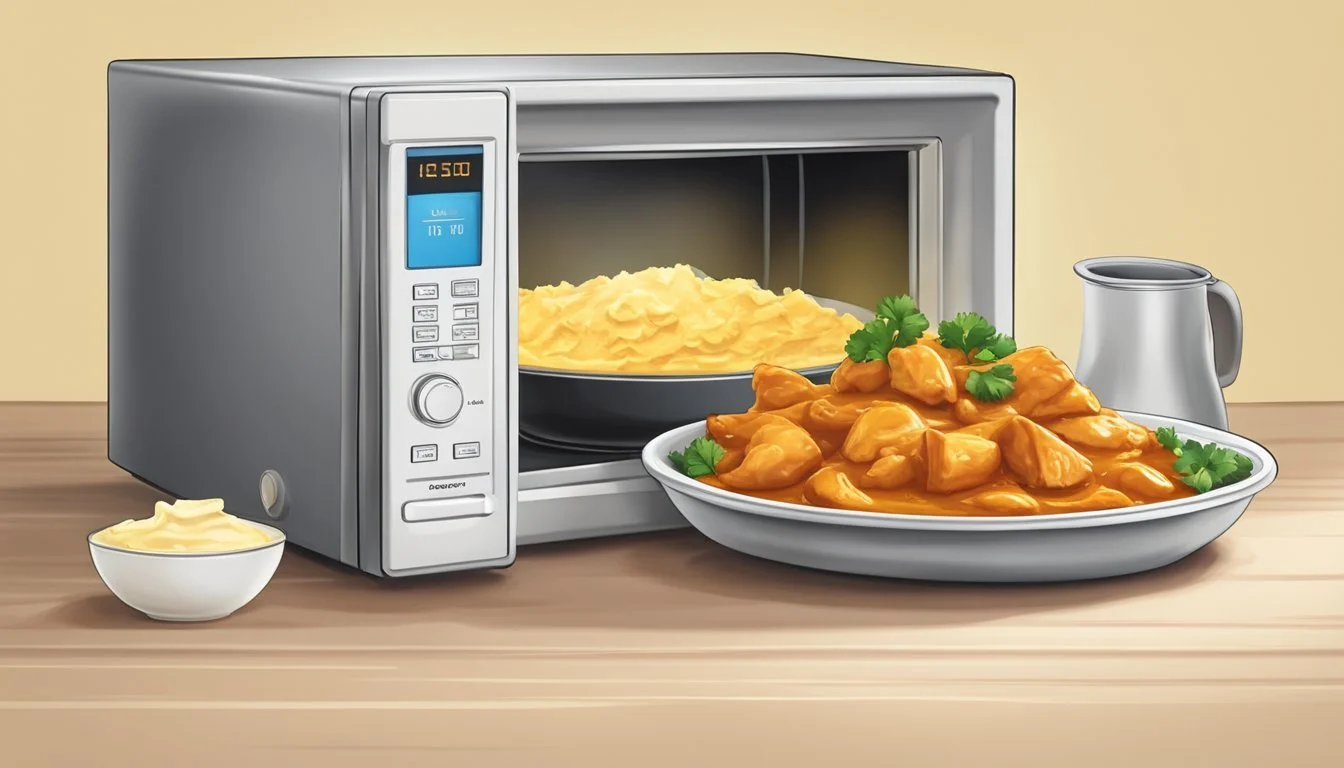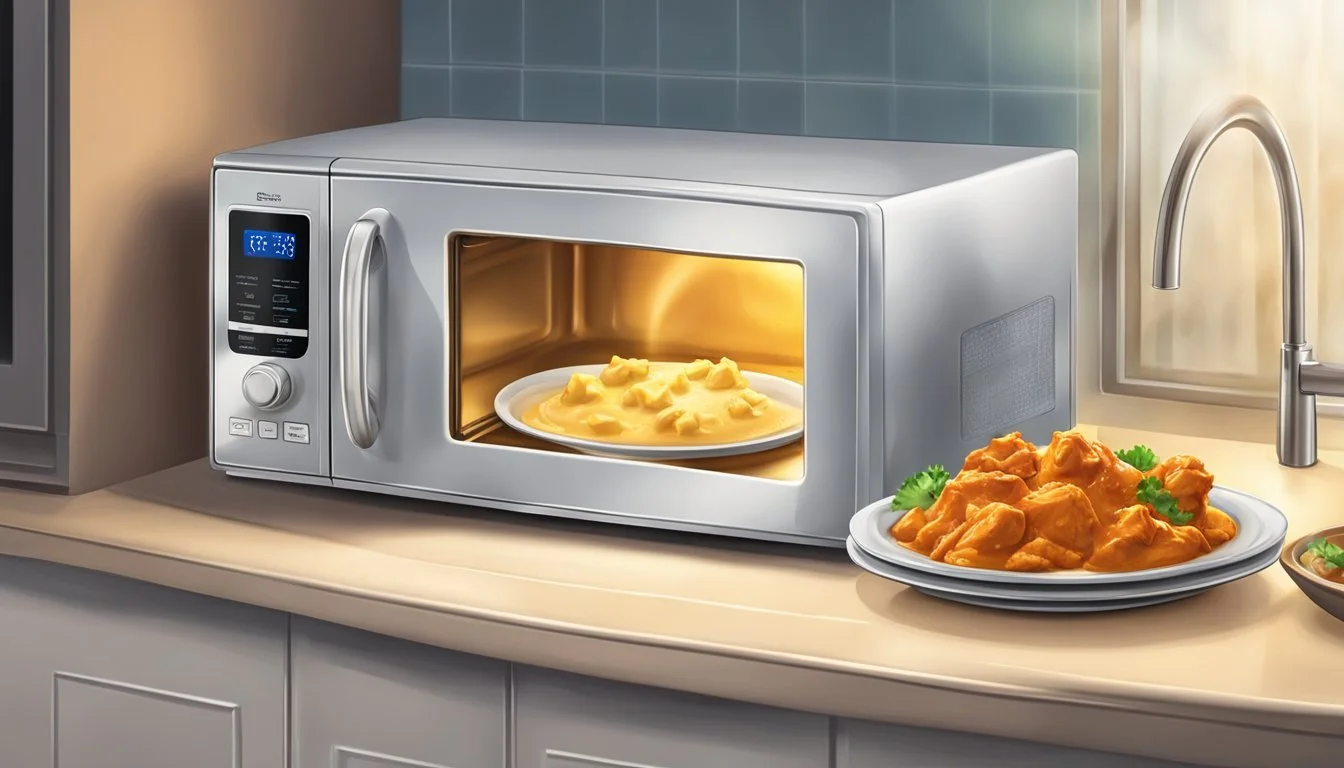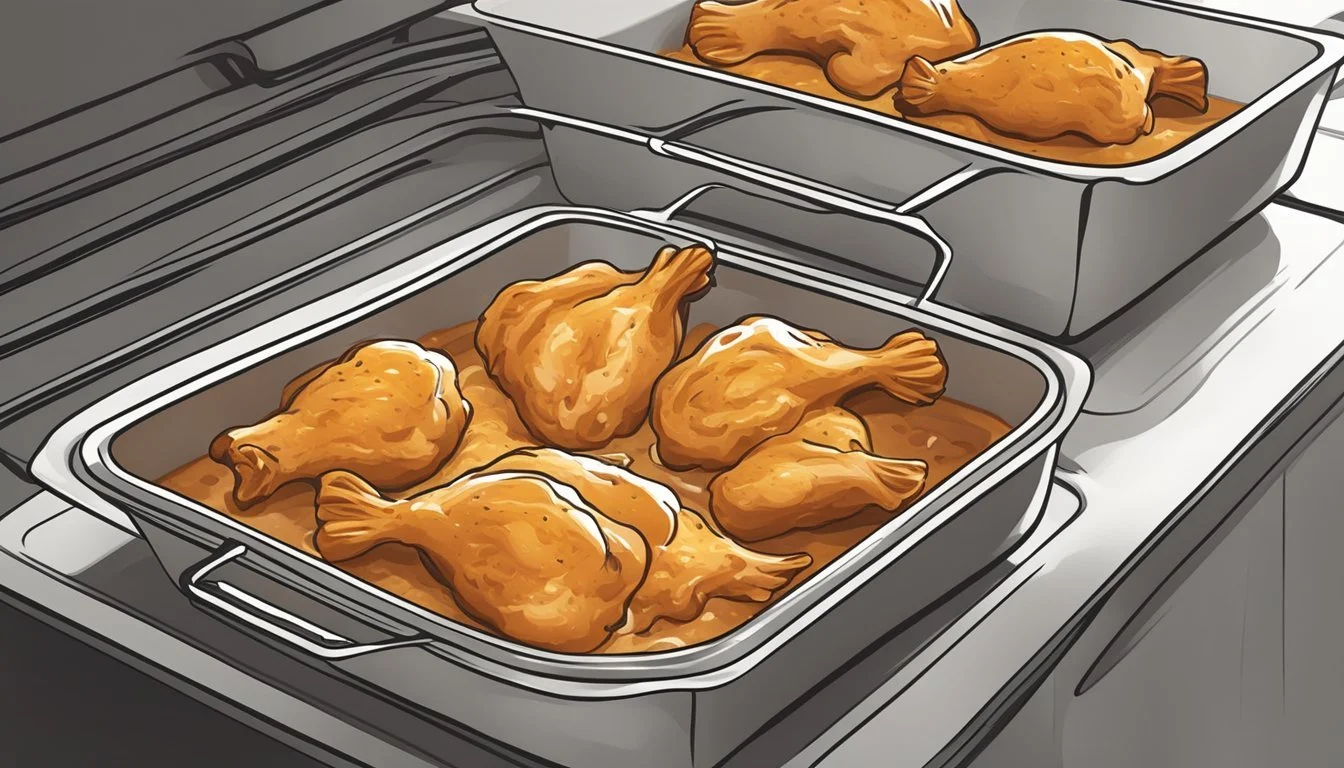Best Way to Reheat Butter Chicken
Ensuring Creaminess and Rich Flavor Retention
Butter chicken, with its rich and creamy tomato sauce, stands as a beloved dish, cherished for its deep flavors and tender chicken pieces. However, as with many saucy dishes, the question of how to properly reheat this Indian classic without losing its essential qualities is a common dilemma. Achieving the balance between a sufficiently warm meal and maintaining the original creaminess and richness of the dish is key to a satisfying leftover experience.
The process of reheating butter chicken requires gentle heat and a careful approach to preserve its moisture and taste. Methods such as using an oven, a stovetop, or a microwave each offer different advantages, but the underlying principle remains the same—heat must be distributed evenly, and the sauce's creamy texture must be protected. The addition of a small amount of cream or butter can aid in retaining the luxurious consistency during reheating.
Understanding Reheat Fundamentals
Proper reheating of butter chicken not only ensures food safety and preserves flavor and texture but also maintains its creamy richness. It involves selecting an optimal method, careful preparation, and precise temperature monitoring.
Food Safety and Handling
When reheating butter chicken, food safety is paramount to prevent growth of bacteria. Butter chicken should be stored in the refrigerator no longer than three to four days and should be reheated to an internal temperature of 165°F. It's crucial to handle leftovers with clean utensils to prevent cross-contamination.
Flavor and Texture Preservation
The key to maintaining the flavor and texture of butter chicken during reheating is to do so gently. Protect the dish's moisture content to prevent drying out and ensure that delicate spices like garam masala remain fragrant. This requires a controlled heat that warms the chicken evenly without overcooking.
Selecting the Right Reheating Method
Multiple reheating methods exist, including microwave, oven, stovetop, and air fryer. For butter chicken, gentle reheating through the stovetop or oven is recommended to preserve its moisture and creamy texture. The microwave may be used for a quick option, though it might not distribute heat as uniformly.
Preparing Butter Chicken for Reheat
Leftover butter chicken should be evenly spread out in an oven-safe dish if using an oven, or in a skillet if using a stovetop. Consider adding a small amount of water, cream, or butter to the dish before reheating to maintain the creaminess and prevent the chicken from drying out.
Using Thermometers for Perfect Reheat
Employing a meat thermometer is the best way to ensure that butter chicken reaches the prescribed internal temperature without overheating. The target temperature is a safe and palatable 165°F. Monitoring with a thermometer avoids the guesswork and guarantees that the dish is safely and thoroughly reheated.
Microwave Reheating Techniques
When reheating butter chicken in the microwave, the primary objectives are to preserve its creamy texture and the richness of flavor. Ensuring even heat distribution while maintaining moisture is essential.
Protecting Moisture Levels
To guard against dryness, one should cover the butter chicken with microwave-safe plastic wrap or a moist paper towel before reheating. This acts as a barrier, locking in steam and moisture. Adding a splash of water onto the chicken before covering can also help to preserve the sauce's consistency.
Microwave-Specific Settings
The power setting of the microwave should be adjusted to a medium level, typically between 50% and 70%, to allow for gentle reheating. Using full power risks splitting the sauce and degrading the dish's quality. To achieve even cooking, one may reheat in one-minute intervals, stirring the butter chicken between each interval to distribute the heat uniformly.
Handling Larger Pieces Individually
Larger pieces of chicken should be managed separately to ensure they heat through properly. It's advisable to cut the chicken into smaller, even-sized pieces for uniform reheating. One can check that each piece reaches the safe temperature of 165°F with a food thermometer.
Oven-Based Reheating Approaches
The oven is an excellent tool for reheating butter chicken as it provides a consistent, gentle heat that can help maintain the dish’s creaminess and prevent drying. Precise temperature control and proper preparation of the dish are key to achieving the best results.
Maintaining Creaminess in the Oven
To preserve the creaminess of butter chicken while reheating in the oven, one should place the leftover chicken in an oven-safe baking dish. Adding a small amount of cream or butter before covering with aluminum foil ensures the sauce remains rich and prevents the chicken from drying out. It's crucial to cover the dish tightly to trap moisture and enhance the sauce's texture.
Method: Oven-based reheating
Preparation: Oven-safe dish, cream/butter added, tightly covered with foil
Temperature: Preheat the oven to 350°F (175°C)
Optimizing Temperature for Evenness
Reheating butter chicken at the right temperature is important for even heating without overcooking. Setting the oven to 350°F (175°C) is generally recommended. The chicken should be stirred gently every couple of minutes to ensure even distribution of heat. Using a food thermometer, one can confirm if the chicken has reached the safe internal temperature of 165°F (74°C) before serving.
Temperature: 350°F (175°C)
Timing: 15-20 minutes (depending on portion size)
Evenness: Stirring every few minutes
Reheating Accompaniments
When serving reheated butter chicken, it's often accompanied by naan bread or rice which can also be warmed in the oven. Naan bread can be wrapped in foil and heated for a few minutes until warm. For rice, adding a small amount of water and covering the container can help to keep it moist.
Naan Bread: Wrap in foil, heat until warm
Rice: Add water, cover, and heat until warm
By following these specific oven-based reheating methods, one can enjoy butter chicken that is as satisfying as when it was first prepared.
Stovetop Warming Strategies
Reheating butter chicken on the stove allows control over temperature and prevents dryness, ensuring the chicken retains its creaminess and flavor.
Stirring for Consistent Heat Distribution
To avoid hot spots and ensure even heating, it's essential to stir the butter chicken periodically. One should use a wooden spoon or a silicone spatula to gently mix the butter chicken, moving it around the skillet. The goal is to distribute heat throughout the dish without breaking the tender pieces of chicken.
Managing Heat to Retain Richness
The key to reheating butter chicken while maintaining its richness is to manage the heat settings on the stove carefully. One should opt for a low to medium heat and allow the dish to gradually warm. Starting on low heat ensures that the chicken does not cook too rapidly, which can compromise the texture of the sauce and chicken.
Heat settings guide:
Low heat: For gentle warming.
Medium heat: If warming large quantities or from a colder starting point.
Adding a small amount of olive oil or ghee to the skillet can help in preventing the chicken from sticking, and contribute to the richness of the final dish.
Creating a Moist Environment
Creating a moist environment in the skillet is vital for keeping the butter chicken juicy. One can achieve this by adding a splash of water or chicken broth to the skillet before covering it with a lid. This technique allows for the chicken to steam slightly, which helps in preserving the moisture within the meat.
Recommended liquids to add:
Water: A splash to create steam.
Chicken broth: Enhances flavor while adding moisture.
Alternative Reheating Methods
When reheating butter chicken, preserving its creamy texture is paramount. Alternative methods can offer different advantages, such as maintaining a crispy texture without drying out the dish.
Reheating with Air Fryer
An air fryer can be a suitable method for reheating butter chicken if one prefers a slightly crispy exterior while ensuring the chicken remains moist. To reheat in an air fryer:
Preheat the air fryer to a temperature of around 350°F.
Place the butter chicken in the air fryer basket, ensuring it's spread out in a single layer to promote even heating.
Heat for about 3-4 minutes. It's crucial to check the dish periodically, as air fryers can vary in intensity.
Broiler Usage for Reheating
Utilizing a broiler can quickly reheat butter chicken while adding a desirable crispiness to the skin. Follow these steps to use the broiler effectively:
Set the oven to broil and let it preheat for a few minutes.
Position the oven rack so that the butter chicken will be about 6 inches away from the broiler element.
Distribute the butter chicken on a broiler-safe pan and place it in the oven.
Monitor closely and broil for about 2-3 minutes, checking frequently to prevent burning.
Frequently Asked Questions
This section addresses common concerns regarding the reheating of butter chicken to preserve its taste and tenderness, considering different types of chicken cuts and potential issues like dryness.
Reheating Bone-In vs. Skinless Chicken
When reheating bone-in butter chicken, the key is to maintain the meat's juiciness without losing the crispy skin. For bone-in pieces, it's typically recommended to use the oven, heating at a moderate temperature of 350°F (175°C) and covering loosely with foil. Skinless chicken, however, often benefits from a gentler warming process to avoid drying out, such as using a skillet on medium heat with a splash of water or chicken broth to add moisture.
Adjusting Reheat Times for Chicken Cuts
The size of the leftover chicken pieces determines the ideal reheating time. For larger cuts like breasts, a longer time in the oven, about 20-25 minutes, is best, while smaller cuts or shredded chicken require less time. It's important to check that each piece reaches an internal temperature of 165°F (74°C) to ensure it's warmed through completely.
Dealing with Dry or Chewy Chicken
If the leftover chicken has become dry or chewy, reviving its moisture can be achieved by adding a liquid. A splash of water or chicken broth can be introduced when reheating in a skillet or before covering with foil in the oven. Stirring periodically helps to redistribute juices, ensuring the chicken remains moist.
Serving Suggestions and Pairings
Once reheated to perfection, butter chicken can be paired with various sides. Serve with fresh naan bread for dipping into the sauce or a side of basmati rice to complete the meal. These classic pairings will complement the rich flavors of the butter chicken, making for a delightful dining experience.




